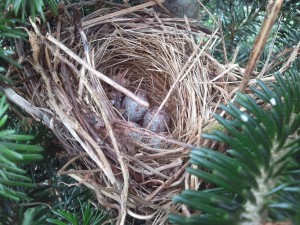Environmental Impacts of Christmas Trees
go.ncsu.edu/readext?325284
en Español / em Português
El inglés es el idioma de control de esta página. En la medida en que haya algún conflicto entre la traducción al inglés y la traducción, el inglés prevalece.
Al hacer clic en el enlace de traducción se activa un servicio de traducción gratuito para convertir la página al español. Al igual que con cualquier traducción por Internet, la conversión no es sensible al contexto y puede que no traduzca el texto en su significado original. NC State Extension no garantiza la exactitud del texto traducido. Por favor, tenga en cuenta que algunas aplicaciones y/o servicios pueden no funcionar como se espera cuando se traducen.
Português
Inglês é o idioma de controle desta página. Na medida que haja algum conflito entre o texto original em Inglês e a tradução, o Inglês prevalece.
Ao clicar no link de tradução, um serviço gratuito de tradução será ativado para converter a página para o Português. Como em qualquer tradução pela internet, a conversão não é sensivel ao contexto e pode não ocorrer a tradução para o significado orginal. O serviço de Extensão da Carolina do Norte (NC State Extension) não garante a exatidão do texto traduzido. Por favor, observe que algumas funções ou serviços podem não funcionar como esperado após a tradução.
English
English is the controlling language of this page. To the extent there is any conflict between the English text and the translation, English controls.
Clicking on the translation link activates a free translation service to convert the page to Spanish. As with any Internet translation, the conversion is not context-sensitive and may not translate the text to its original meaning. NC State Extension does not guarantee the accuracy of the translated text. Please note that some applications and/or services may not function as expected when translated.
Collapse ▲What’s best?
Consumers often ask which is better for the environment — to use a real farm-grown Christmas tree or an artificial one? The North Carolina Christmas Tree Association has put together an interesting comparison: Review the comparisons at: The Environmental Choice: The real Christmas tree vs the fake Christmas tree.
Trees and wildlife
One important contribution that real Christmas tree production provides is green-space for wildlife to live and forage in. Christmas tree growers accomplish this by managing their ground covers. Learn more at: Weeds Are Out — Ground Covers Are In!
In many ways, a Christmas tree plantation in western North Carolina is like a woodland meadow. The trees themselves provide shelter for smaller birds and mammals. The diversity of ground covers around trees provide pollen, nectar, support insects which in turn are food, and provide seeds and forage. It is a good habitat for mice and rabbits and ground dwelling birds such as grouse and quail. Song birds build nests in trees. Even the decaying stumps of of the trees that were cut harbor insects that are food for wood peckers and flickers.
But wildlife can also include the smallest foragers. Christmas tree farms, because of the flowering ground covers growing around the trees, provide habitat for native bees and other pollinators. Learn more at: The Pollinator Study.
What about pesticides?
In western North Carolina, Fraser fir Christmas trees are produced in areas where tourism and retirement homes bring people to the area who have little prior contact with farming. Growers are often criticized for using too many pesticides.
What pests do Fraser fir growers have to control? Why are insecticides even necessary? Learn more at: What’s eating your tree?
Pesticide use continues to decline as growers adapt integrated pest management (IPM) practices. These reductions have been substantial. Pest management surveys conducted by N.C. Cooperative Extension specialists have documented a 71% decrease in pesticide use from 2000 to 2013. Learn more at: What pesticides are used on Fraser fir production in western North Carolina?
So how does IPM help growers reduce pesticides? Learn more at: What is an IPM farm?
Many people in western North Carolina have expressed concerns that cancer rates are higher in the area because of pesticides used on Christmas trees. In fact, cancer rates are typically lower in the counties producing Christmas trees than elsewhere in NC. See the most recent cancer rates. Learn more at: Health concerns about pesticide use in Christmas trees.



